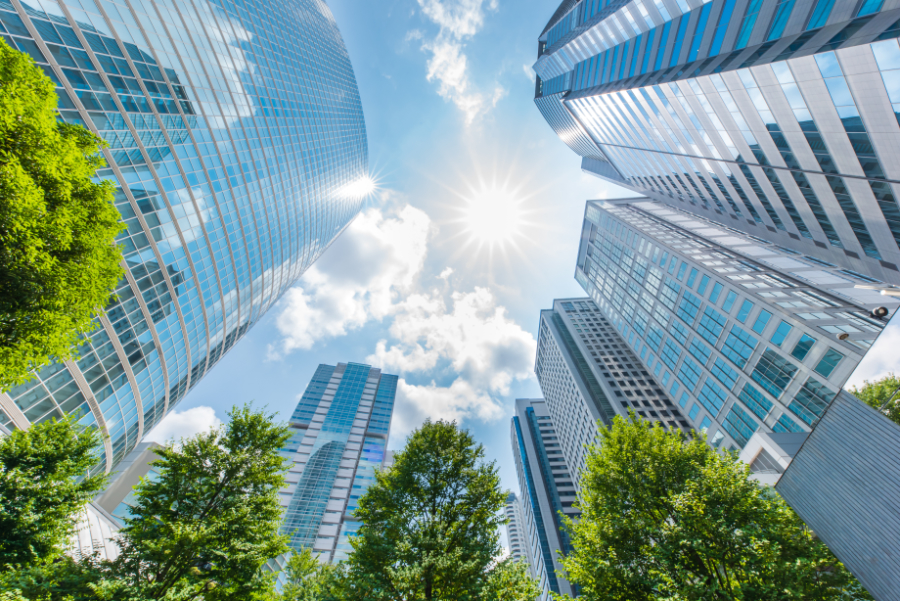Sustainability has become a hot topic in corporate America, and executives are actively looking for initiatives that can help reduce carbon footprint. Corporate real estate, for example, is one area of operations that can have a significant impact on the environment. According to the EPA, the commercial and residential sector alone is responsible for 13% of all greenhouse gas emissions in the United States.
The good news is, the real estate industry already has programs in place to address its environmental impact. Established by the USGBC in 1993, the LEED (Leadership in Energy and Environmental Design) rating system and certification has become the world-leading green building program.
The LEED Rating System
The program takes into account all aspects of an asset’s lifecycle, from design and construction, to operations and property management, when rating properties. The rating system awards four certification levels, based on the number of points accumulated by the property – Certified, Silver, Gold, and Platinum. In order to achieve Platinum level, a building needs to earn 80 or more points in various green building strategies.
While the LEED certification is available for all types of buildings, it has generated a lot of interest specifically in the commercial real estate sector. Green buildings provide a number of benefits to both humans and the planet, so the interest among corporate clients is only expected to increase.
The Advantages of LEED-Certified Buildings
Healthier Work Environment and Happier Employees
Improved indoor air quality, abundant natural light access, and environment-friendly buildout materials create a healthier workplace. Employees in green buildings are less likely to suffer from allergies, respiratory issues, and even depression and anxiety, which in turn can reduce sick days and turnover, and improve productivity.
Operational Cost Savings
LEED-certified properties are designed to consume less water and electricity; therefore they can deliver immediate operational savings to its corporate tenants. USGBC reports that in the 3-year period between 2015 and 2018, LEED-certified buildings were responsible for $1.2 billion in energy savings and nearly $150 million in water savings.
Corporate Tax Benefits
Locating your business in a LEED-certified building can qualify you for tax breaks and other incentives provided by local and state governments. Some of the green building incentives offered by municipalities include expedited permitting processes, building density and height bonuses, grants and low-interest loans, reduced fees, and even planning and marketing support.
Better for the Environment
Energy-efficient buildings are also critical to fighting climate change. According to USGBC, they consume 25% less energy and 11% less water than traditional commercial properties. Such efficiencies help reduce the outdoor air pollution and carbon emissions generated by the building.
Corporate Image Boost
Consumers nowadays look beyond the actual product or service when choosing what companies to engage with. Specifically, commitment to sustainability and green operations has become increasingly important. Choosing to operate out of LEED-certified properties is one of the easiest ways to show your pledge to the planet and boost your corporate brand.
If you would like to learn more about how other corporations have benefited from leasing green buildings, or you are ready to explore LEED-certified properties for your organization, you should consider working with a tenant representative, who can help you find the right location at no cost to you.
Subscribe to our blog for more CRE tips!!







